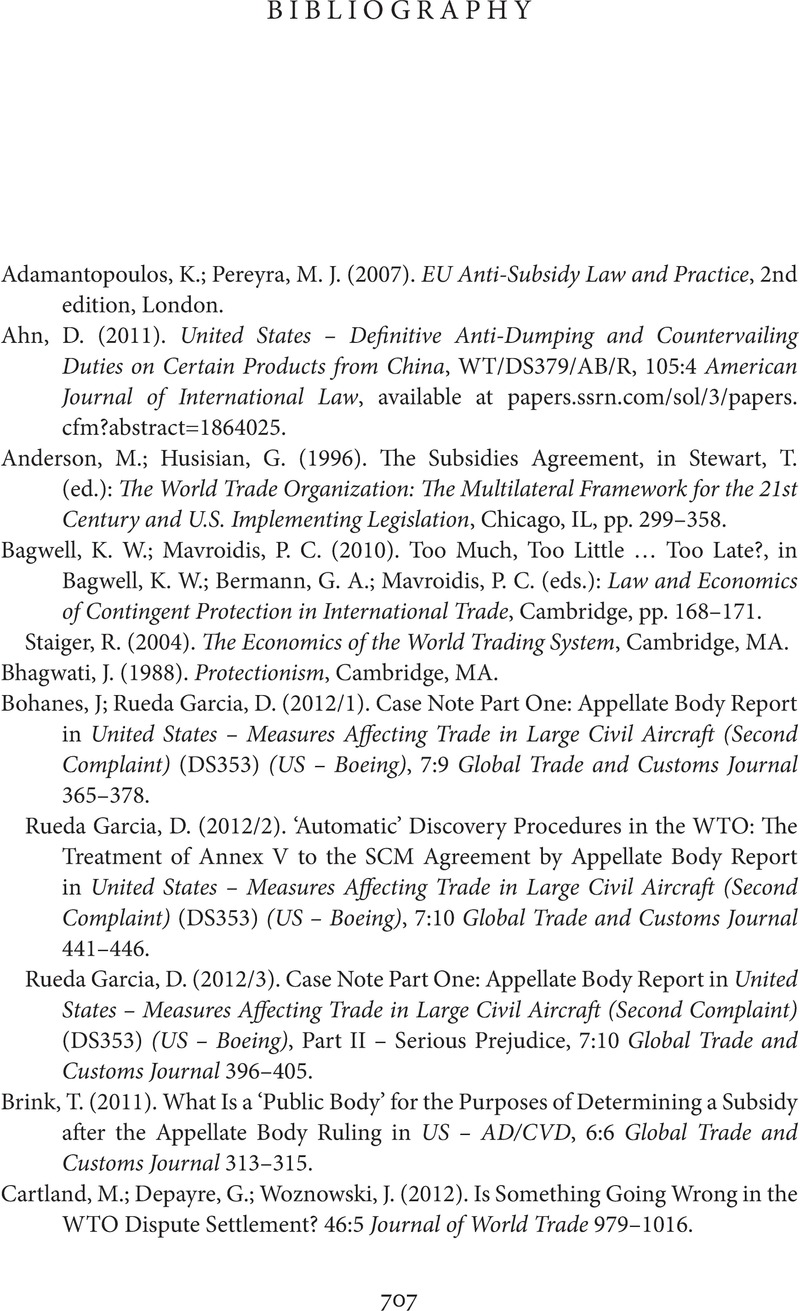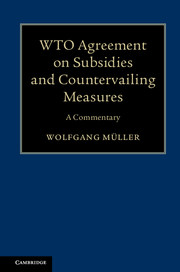Book contents
- WTO Agreement on Subsidies and Countervailing MeasuresA Commentary
- WTO Agreement on Subsidies and Countervailing Measures
- Copyright page
- Synoptic Contents
- Detailed Contents
- Preface
- Abbreviations
- Table of Cases
- I INTRODUCTION
- II COMMENTARY
- Annex I Illustrative List of Export Subsidies
- Annex II Guidelines on Consumption of Inputs in the Production Process
- Annex III Guidelines in the Determination of Substitution Drawback Systems as Export Subsidies
- Annex IV Calculation of the Total Ad Valorem Subsidization (Paragraph 1(a) of Article 6)
- Annex V Procedures for Developing Information Concerning Serious Prejudice
- Annex VI Procedures for On-the-Spot Investigations Pursuant to Paragraph 6 of Article 12
- Annex VII Developing Country Members Referred to in Paragraph 2(a) of Article 27
- APPENDICES
- Bibliography
- Index
- References
Bibliography
Published online by Cambridge University Press: 31 August 2017
- WTO Agreement on Subsidies and Countervailing MeasuresA Commentary
- WTO Agreement on Subsidies and Countervailing Measures
- Copyright page
- Synoptic Contents
- Detailed Contents
- Preface
- Abbreviations
- Table of Cases
- I INTRODUCTION
- II COMMENTARY
- Annex I Illustrative List of Export Subsidies
- Annex II Guidelines on Consumption of Inputs in the Production Process
- Annex III Guidelines in the Determination of Substitution Drawback Systems as Export Subsidies
- Annex IV Calculation of the Total Ad Valorem Subsidization (Paragraph 1(a) of Article 6)
- Annex V Procedures for Developing Information Concerning Serious Prejudice
- Annex VI Procedures for On-the-Spot Investigations Pursuant to Paragraph 6 of Article 12
- Annex VII Developing Country Members Referred to in Paragraph 2(a) of Article 27
- APPENDICES
- Bibliography
- Index
- References
Summary

- Type
- Chapter
- Information
- WTO Agreement on Subsidies and Countervailing MeasuresA Commentary, pp. 707 - 712Publisher: Cambridge University PressPrint publication year: 2017



